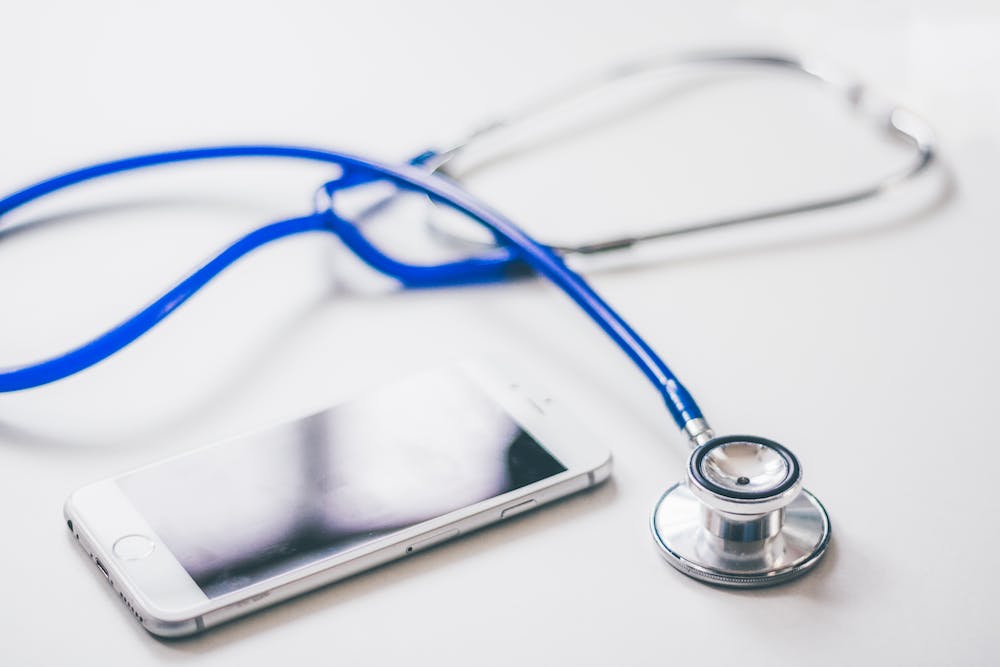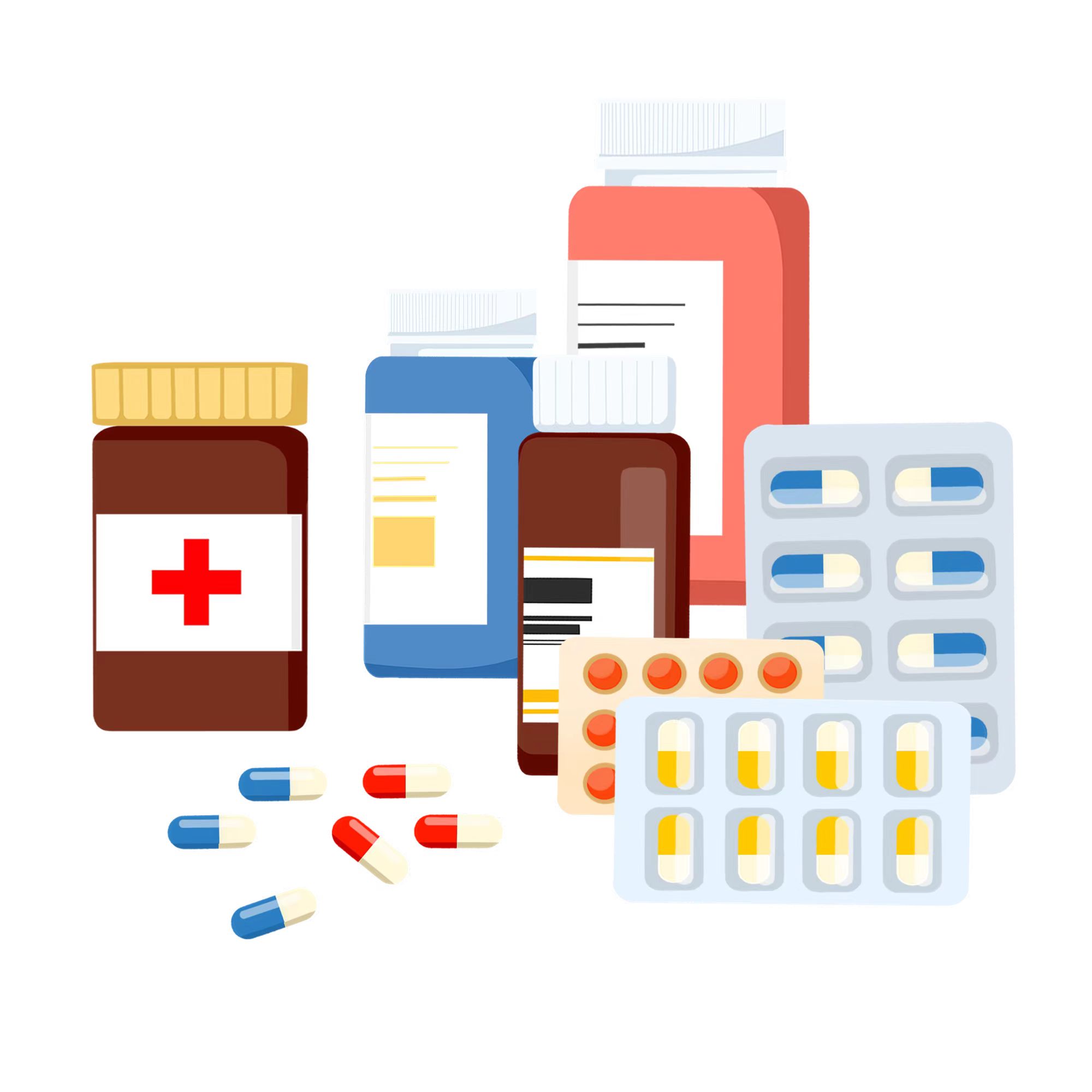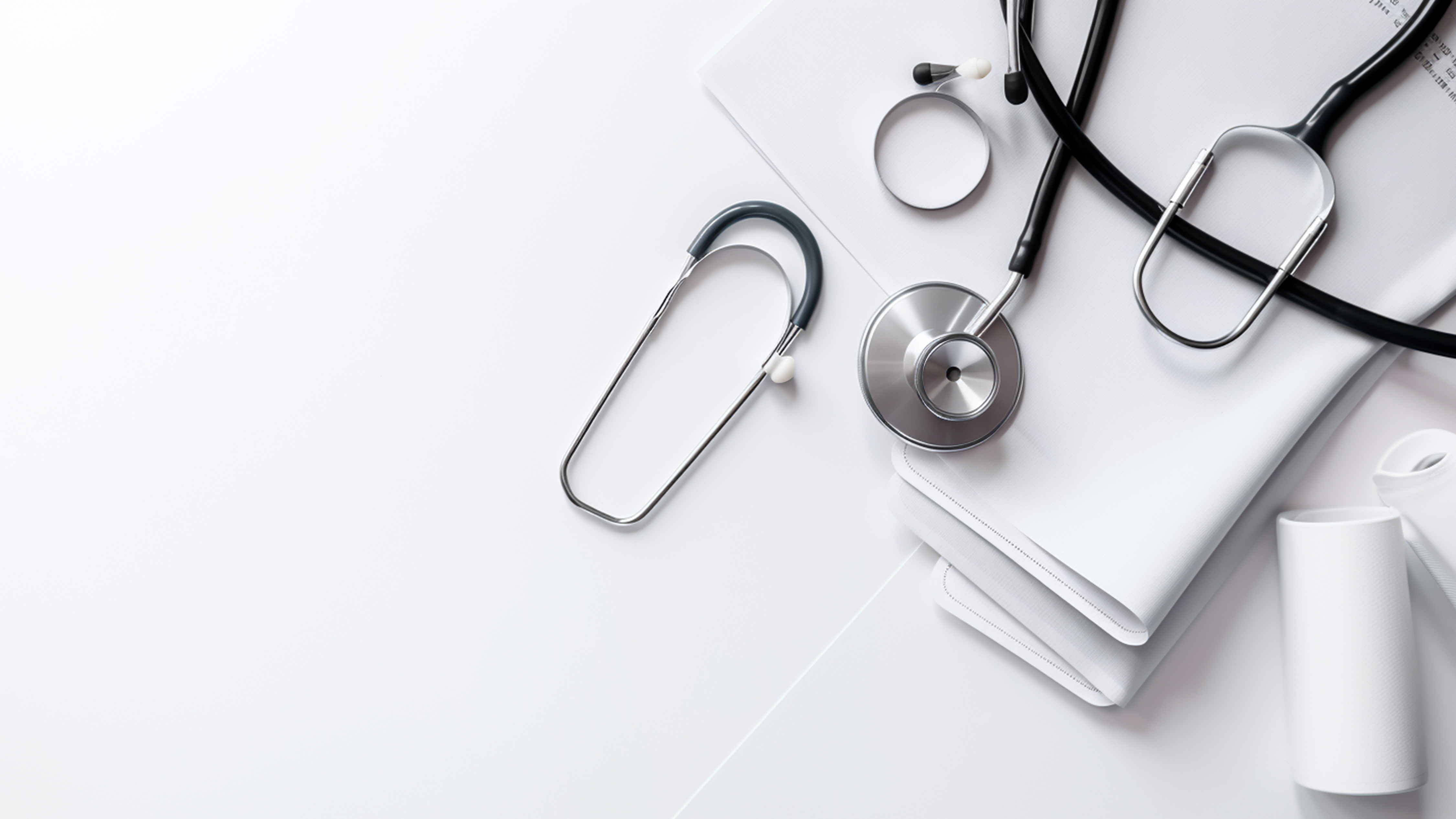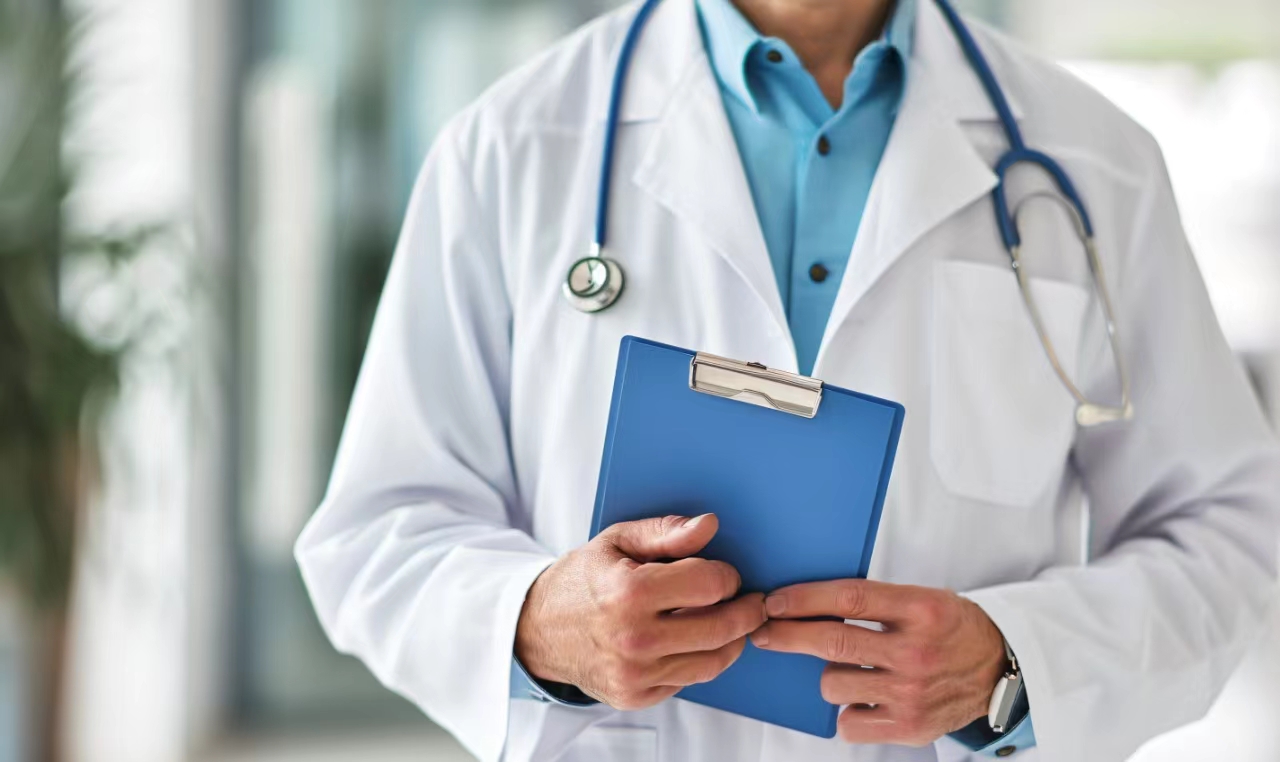好文推荐 | 神经可塑性机制在卒中后认知功能恢复中的作用
2024-06-13 中风与神经疾病杂志 中风与神经疾病杂志
本综述将对卒中后中枢神经系统可塑性改变的现有研究进行总结和深入探讨,有助于临床医生理解卒中后认知恢复的神经可塑性机制,并进而开发针对性的干预措施,最大化减少脑功能的损伤。
摘要
卒中后认知障碍(PSCI)因其高发病率、高致残致死率而在国际卒中研究领域备受瞩目,但因其发病机制未完全阐明而限制了有效治疗手段。临床观察性研究表明,卒中后12个月内患者的认知功能呈不同程度的恢复,这一恢复与神经可塑性机制密切相关。深入了解神经可塑性机制对于制定最佳的卒中后神经系统修复策略并对受损脑功能进行补偿具有重要意义。本文首先介绍了卒中后自发神经可塑性机制,包括神经细胞的可塑性、突触神经环路的可塑性和脑网络的可塑性,及其与认知功能之间的关系,揭示了神经可塑性与脑功能恢复的动态和复杂性。随后探讨了增强神经可塑性的方法,包括药物治疗、康复训练、非侵袭性脑刺激和其他方法,提倡早期干预效果好。尽管一些新兴方法尚缺乏明确的临床依据,但初步研究中的疗效令人鼓舞,有望开启卒中后治疗的新篇章。
卒中后认知障碍(post-stroke cognitive impairment,PSCI)是指在脑卒中(包括缺血性脑梗死和脑出血)后6个月内出现的认知功能损害,包括记忆力、注意力、执行功能、语言和视空间能力等方面的损害。据世界卒中组织最新统计,25岁以上人群一生中发生脑卒中的概率为25%,其中约30%~ 70%的患者可出现认知功能减退,其与患者的远期生活能力下降、多个系统并发症及死亡密切相关,从而给人类健康及全球医疗系统增加了负担。既往研究表明,患者在脑卒中后长期随访时表现出不同的认知功能恢复速率,直接影响到最终是否发展成为PSCI,其中神经可塑性在认知功能的恢复中具有重要作用。本综述将对卒中后中枢神经系统可塑性改变的现有研究进行总结和深入探讨,有助于临床医生理解卒中后认知恢复的神经可塑性机制,并进而开发针对性的干预措施,最大化减少脑功能的损伤。
1 神经可塑性
越来越多的临床纵向数据表明,大部分患者在卒中后12个月内的认知水平较急性期逐步改善,其主要依赖于中枢神经系统自身的神经可塑性机制。神经可塑性指神经系统受到损伤后自发地从结构到功能自我修复和重组的过程,包含了解剖和生化改变,结果可以是正面(脑功能恢复)、中性(脑功能无变化)、或负面(脑功能进一步受损)的,该过程持续至终生。神经可塑性机制在正常脑和疾病状态的脑中截然不同。正常功能脑的可塑性机制主要为长时程增强(long-term potentiation,LTP),为学习和记忆的基础;而卒中后可塑性改变包括神经发生增多、脑功能图谱重映射、突触信号通路增强、脑网络重组等,为大脑对外界损伤刺激做出的反应。
2 神经细胞的可塑性
2.1 神经发生(neurogenesis)
神经发生指神经干细胞(neural stem cell,NSC)或神经祖细胞(neural progenitor cell,NPC)增殖分化为新的成熟神经元的过程。20世纪90年代以前,人们广泛认为成年哺乳动物的脑部不存在神经发生。现在,成年神经发生已在人类和小鼠中进行了广泛的研究,以侧脑室的脑室下区(subventricular zone,SVZ)和海马齿状回的颗粒层下区(subgranular zone,SGZ)的研究最为深入。值得注意的是,成年人生理状态下神经发生相对较少,而神经胶质细胞和其他类型细胞则定期更替。哺乳动物在脑卒中、脑损伤、运动、丰富环境等多种情况可上调神经发生,并终生具备该能力。
2.1.1 SVZ和SGZ的神经发生
成年时期,NSC主要存在于侧脑室SVZ和海马齿状回SGZ两个区域。生理情况下,SVZ通过神经发生在人类大脑中向纹状体提供了更多的新生神经元,而小鼠中存在于SVZ的NSC产生神经母细胞,这些细胞通过嘴侧迁移流(rostral migratory stream,RMS)前往嗅球(olfactory bulb,OB),并继而成为与嗅觉相关行为的重要新生中间神经元;神经发生在人类和小鼠的脑SGZ中均为海马贡献了新生神经元。病理性缺血情况下,成年人和小鼠位于SVZ的NSC分化为神经母细胞,继而偏离原始路线前往卒中周围脑实质和纹状体缺血半暗带;位于小鼠SGZ的神经干细胞,在缺血后仍像生理条件下增殖分化成神经母细胞并迁移至齿状回颗粒层,并不迁移到海马以外的区域。因此,脑缺血损伤后SVZ更常作为缺血区域新生神经元的来源,而海马的神经发生不会为缺血部位提供新生神经元,但它与卒中后认知恢复更为相关,对于海马的重塑和记忆的维持具有重要作用。
2.1.2 大脑皮质的神经发生
生理情况下,成年脑皮质中很少产生新生神经元,既往数据显示,新生皮质神经元占大脑皮质总神经元的0.005%~0.03%,而脑损伤会将该比例提高到0.06%~1%。研究表明,皮质的新生神经元不仅来自于侧脑室SVZ的前体细胞,皮质成年期NSC亦被检测到,且可通过诱导神经发生后产生皮质新生神经元和胶质细胞,该新型成年期休眠干细胞被Jensen等科学家用端粒酶逆转录酶(telomerase reverse transcriptase,TERT)标记,并在成年期小鼠皮质中少量观察到。人的大脑皮质白质中,癫痫、动脉瘤或脑外伤后可分离出NSC,且能够完全分化为神经元和胶质细胞。在大脑皮质灰质中,存在表达NG2(一种膜蛋白多糖,由胶质前体细胞表达)的细胞,它们被证实可生成新的皮质GABA能抑制性中间神经元。成年大鼠脑皮质中的NSCs和NPC还可通过激光损伤诱导产生,被nestin+或vimentin+标记的NSCs没有直接证据显示可产生成熟神经元;而用GFP表达的逆转录病毒载体标记的潜在增殖NPC可在成年啮齿动物大脑皮质第1层产生GABA能抑制性神经元亚类。在大脑皮质的血管周围区域,卒中后发现了nestin和周细胞标志物阳性的NSCs,表明NSCs可利用血管作为细胞迁移的引导。据此,支持存在分布式皮质内NSC种群的观点,但尚不清楚这些前体细胞与SVZ的NSC之间的关系,以及它们是否真正的多能干细胞还是已经分化的NPC。
NSCs可在皮质中产生新生神经元,且不同类型和程度的脑损伤可激活不同程度的神经发生。轻微损伤(如颈动脉闭塞10 min)可激发皮质第1层和软脑膜NSC/NPC产生新生神经元;重大损伤(如90 min或永久性夹闭、激光损伤或局灶性脑缺血)可特定导致来自SVZ、血管周围、灰质和白质的神经发生。不同损伤类型和严重程度差异性激活的NSCs广泛分布,有助于提高对缺血性损伤神经反应的灵活性,可在临床康复中加以利用以促进神经再生。
2.1.3 脑膜和脉络丛的神经发生
脑膜由硬脑膜、蛛网膜和软脑膜组成,包含有充满脑脊液的蛛网膜下腔,由于其在大脑表面广泛分布、与皮质和血管密切相关、易于细胞迁移,近年来成为神经前体细胞研究的新兴领域,且为一个较有潜力的治疗靶点。软膜蛛网膜为脑膜的最深2层,其中含有可在成年大鼠脑中增殖的nestin+NSC,其他类神经干细胞种群亦在脑膜中被发现,它们在中枢神经系统受损时可被激活发生增殖和迁移。来自脑膜中的该群nestin+细胞可被缺血性卒中诱导分化为神经元和胶质细胞。除此以外,脑膜NSC存在于涵盖大脑和脊髓的广泛区域,还可作为将新生成的神经前体细胞输送到远处部位的通道。啮齿类动物和人类大脑中有证据表明,N-硫酸肝素硫酸盐结构(该结构在细胞增殖和迁移中发挥重要作用)被发现在两个神经发生区域如SVZ、SGV、脑膜等之间形成连接,起源于脑膜的NPC可迁移至皮质并可在新生小鼠中生成神经元,但该现象在成年人中尚未被证明。脑膜在卒中后神经反应和再生康复中具有重要作用,但仍需进一步精准追踪脑膜神经前体细胞的来源及迁移目的脑区。
脉络丛(choroid plexus,ChP)存在于脑室腔内且富血供,为产生脑脊液的组织,是成年脑中的另一NSC龛位。研究表明ChP包含有潜在的NSC,并且在体外试验和移植到受损脊髓后可产生新的神经细胞。此外,科学家们还观察到成年脑ChP中存在TERT+干细胞,该群干细胞具有极大的增殖分化能力。脉络丛细胞为成年哺乳动物脑内潜在的神经前体细胞,它们除了可增殖分化为表达神经核(neuronal nuclear,NeuN)抗原(一种成熟神经细胞的标记物)的细胞外,还可产生表达胶质纤维酸性蛋白(glial fibrillary acidic protein,GFAP)(一种神经胶质/星形胶质细胞标记物)的细胞。
除此以外,脑膜和ChP对其他影响卒中后神经发生的过程有重大作用,如神经炎症、免疫细胞迁移、神经胶质细胞活化和淋巴循环等,ChP还可分泌促进神经恢复再生的神经生长因子。
2.2 脑功能图谱重映射(remapping)
急性卒中后病灶区域功能会在短期内急剧丧失,之后数周至数月内患者受损脑功能逐渐恢复,伴随病灶周围出现新的功能性表达,这个过程称为重映射,已在卒中动物模型和患者上观察到该现象。脑功能图谱存在于皮质、白质和基底神经节等结构,目前大部分研究为感觉运动皮质受损后的重映射。在非人灵长类动物中,缺血性损伤后的皮质重映射程度受病灶大小影响,并伴有病灶周围的轴突发芽及新的神经连接形成,康复训练可进一步改变重映射图谱的大小和位置。在人类中,功能磁共振成像(functional magnetic resonance imaging,fMRI)技术被广泛用于研究卒中后图谱重映射,有研究报道了卒中后运动皮质手图谱在背侧、腹侧和后部方向上的转变,病灶附近幸存的脑区域可承担受损脑区的功能,信号激活程度与皮质脊髓束损伤程度相关。活性调节细胞骨架(activity-regulated cytoskeleton,Arc)相关蛋白介导的突触可塑性可实现卒中后的脑图谱重映射。然而,卒中后重映射的分子机制尚未阐明,甚至该理论本身仍有争议。Wilson等研究表明卒中后失语患者语言能力依赖于左半球语言中枢功能的恢复,而正常脑区替代受损脑区功能的证据不足;另有学者使用活体钙成像技术记录卒中后小鼠触须感觉诱发的体感皮质神经元活动,并未发现病灶附近幸存脑区有响应神经元的增加,结果均质疑了“重映射”理论,支持卒中后康复通过加强已有的神经环路进行,后续仍需更多实验进一步验证。
3 触神经环路的可塑性
突触神经环路的可塑性亦为卒中后康复的重要机制,主要通过改变突触数量和功能实现。(1)突触发生(synaptogenesis):突触发生为广义的术语,包含突触形成、成熟和维持的复杂过程,为新建神经环路的基础。如单侧海马病变的研究表明,对侧健康海马的轴突可通过突触发生形成新的突触连接,突触后部分在突触前区域损害的情况下仍能正常工作,且由于形成新突触的轴突纤维与受损突触同源,可极大促进海马功能的恢复。(2)树突分支(dendritic arborization)和轴突发芽(axonal sprouting):树突分支指神经元树突以树状分支的方式扩展,通过树突形态发生的机制建立新的突触连接。轴突发芽则为受损神经元的轴突在神经系统中重新生长和分支,以形成新的突触连接。(3)长时程增强(LTP):发生在2个神经元突触信号传输中的一种持久的增强现象。目前研究表明,突触神经环路主要遵循2种学习规则帮助卒中后神经系统的恢复:稳态可塑性确保神经元获得足够的突触输入,和赫布可塑性重新分配突触连接及强度,重组受损的神经环路。
3.1 稳态可塑性(homeostatic plasticity)
稳态可塑性为一种负反馈型的突触可塑性,突触会根据神经元的活动水平来调整其强度,目标是保持神经网络的稳定性和平衡,防止突触强度过于兴奋或抑制。卒中后突触活动的减弱导致突触前神经递质释放和突触后响应的上调,甚至增加突触数量,试图将活动恢复到疾病前水平。卒中后的最初几天或几周内,梗死区域附近及远处功能相关组织中的突触活动减少,可由梗死区域水肿、脑血流减少及代谢抑制影响其对相邻组织信号传导所致,继而稳态可塑性发挥作用,通过存活突触及新连接重置这些神经元的活动水平。卒中后1周~1个月在啮齿类动物中可出现神经超兴奋,表现为非特异性扩大的信号接收和增加的自发活动,如大鼠局灶性脑缺血模型中,存活神经元兴奋性增加出现了短暂的模式化低频(0.1~1 Hz)自发活动,与抑制因子的减少和神经元内在电生理特性的改变相关,受突触后膜受体表达量、磷酸化及离子梯度等因素影响,该低频自发活动有助于轴突发芽。除调节突触活动外,稳态可塑性还可增加突触发生、树突棘及轴突发芽以弥补受损的脑组织结构。研究表明,炎症因子肿瘤坏死因子-α(tumor necrosis factor-α,TNF-α)和脑源性神经营养因子(brain-derived neurotrophic factor,BDNF)可上调AMPA型谷氨酸的受体插入,从而提高突触效能。因此,梗死区域突触传递的增强与卒中后胶质细胞释放的炎症因子相关,抑制炎症可能会减少卒中后的突触可塑性,须谨慎对待。
3.2 赫布可塑性(hebbian plasticity)
赫布可塑性是一种正反馈型的突触可塑性,它基于“赫布理论(hebbian theory)”,即突触前神经元向突触后神经元持续重复的刺激,可导致突触传递效能增加,从而加强这个连接。生理条件下可加强神经网络中已存在的突触连接,促进学习记忆等认知功能,卒中后则有助于建立新的突触连接,帮助神经环路的重组。卒中后1~4周内,如前所述啮齿类动物的梗死周围正常组织出现神经超兴奋,有助于其他非特异性感觉刺激的同步传入,伴有突触发生,前后突触同时强化即引起赫布可塑性。卒中后4~8周,前后突触长时间持续强化,该连接被加强,同时感觉反应更具特异性,使得突触连接可被精细调节和优化重组。赫布可塑性为制定合理的康复疗法提供了依据,特定形式的康复训练(如失语症患者的语言训练)可影响卒中后突触环路重组及脑功能的恢复。患者运用虚拟现实技术通过想象做运动训练,亦可加强特定突触、增强突触前后同步电活动,并进一步支持了赫布可塑性机制。
稳态和赫布可塑性机制可同时起作用,稳态机制调节总的突触强度,赫布机制将突触强度重新分配。卒中后原本丘脑和皮质内的连接仍存在,它们可提供弱感觉或运动信号,通过两种可塑性得以增强突触连接并进行环路的补偿性重连。虽然稳态可塑性机制提醒我们需仔细考虑康复(可负反馈降低突触强度)开始时间。然而,卒中本身可能已导致足够的神经活动丧失以启动稳态机制,因而无需减少治疗活动。该2种可塑性机制相互作用补充,帮助大脑康复,而2种相反的机制如何共同作用于同一神经网络尚不清楚,理解它们的工作方式及生物学意义有助于开发更有效的治疗策略。
4 脑网络的可塑性
越来越多的证据表明,小的皮质下梗死因破坏了脑认知网络可出现注意力和执行功能损害等认知障碍。脑网络正成为卒中后康复研究的新兴关注点,患者临床功能的恢复很大程度上与脑网络重组和对失去功能的补偿相关。静息态功能磁共振成像(resting-state functional magnetic resonance imaging,rs-fMRI)研究表明,与动物研究结果类似,患者卒中后早期可有运动、感觉、注意和语言等网络连接中断,两半球之间的连接在卒中后加强,并与功能恢复呈正相关。任务态fMRI结果显示,卒中后急性期辅助运动区(supplementary motor area, SMA)和运动前区皮质(premotor cortex,PMC)与病灶同侧初级运动区(M1)之间的正耦合减少,但随着时间的推移而增加,并与功能恢复呈正相关。一项高分辨率脑电图(electroencephalogram,EEG)研究表明,相对于健康对照组,卒中患者在α频段波中的功能连接中断更甚,并与运动和认知障碍的严重程度相关。EEG相干性分析发现慢性卒中运动恢复较好的患者病灶侧半球皮质-皮质连接减少而病灶对侧半球内连接增加,推测病灶对侧半球代偿性功能连接增加利于康复。Soleimani等运用静息态脑磁图(magnetoencephalography,MEG)研究病灶较小卒中患者随时间变化方向性脑功能连接模式的转变,结果基本同先前fMRI研究一致:卒中后早期阶段观察到增多的连接纤维从病灶对侧半球发出至病灶侧脑区,6个月后重复MEG显示两半球间连接进一步增多,以从病灶侧发出至对侧的连接纤维为主,伴有认知功能恢复,12个月后显示半球间连接纤维减少,但认知功能进一步改善。提示早期认知功能改善依赖于对侧大脑功能的补偿,而随着时间延长病灶侧大脑功能逐渐恢复并在认知进一步恢复中发挥重要作用。卒中后脑网络连接不仅随时间动态改变,且可根据卒中大小调节大脑半球在恢复期的不同作用—卒中损害较大患者对侧轴突会跨越中线并向失神经支配区域发出新分支连接,对侧半球对病灶的恢复具有促进作用,而损害较小时病灶同侧幸存脑区轴突会在失神经支配区域生长,对侧半球则以竞争占主导地位抑制病灶的功能恢复。有研究表明脑网络的改变与突触调节神经元的兴奋与抑制相关,但机制尚未充分阐明。脑复杂网络连接重组的进一步探究,对帮助开发卒中后治疗具有重要价值。
5 增强神经可塑性的方法
卒中后认知障碍尚缺乏有效地治疗方法,促使科学家寻求其他措施,通过增强神经可塑性来改善脑功能为卒中领域研究热点之一。
5.1 药物对突触神经环路的改善
神经营养因子能够通过诱导神经发生、突触发生、树突分支等机制改善神经环路的可塑性。经典神经营养因子包括:神经生长因子(nerve growth factor,NGF)、BDNF和神经营养因子3/4/5(neurotrophin 3/4/5,NT3/4/5)。NGF和BDNF对突触前端的神经突触有化学诱导剂作用。神经系统的存活和成熟还受细胞因子的影响,如表皮生长因子(epidermal growth factor,EGF)、胰岛素样生长因子1(insulin-like growth factor-1,IGF-1)、肝细胞生长因子(hepatocyte growth factor,HGF)、白细胞介素-6(interleukin-6, IL-6)、促红细胞生成素(erythropoietin, EPO)、血管内皮生长因子(vascular endothelial growth factor, VEGF)、干细胞因子(stem cell factor, SCF)等。这些生物分子可调节神经再生及神经退行性过程,对神经前体细胞有较强影响。其中VEGF不仅对神经系统中的血管生长至关重要,还可促进神经发生、神经胶质细胞生长及神经修复,从而改善卒中后神经环路可塑性。
5.2 康复训练
认知训练和有氧运动均可通过增强神经可塑性从而改善卒中后患者的认知功能。有研究表明面部-姓名记忆策略训练和重复-延迟记忆训练可改善卒中患者的记忆力。卒中后失语症研究表明,语言康复训练可改善患者的语言能力,同时伴有语言相关皮质尤其是左侧额下回活动的增加。Miotto等证实语义组织策略训练(semantic organization strategy training,SOST)可改善左侧额顶叶卒中患者的情景记忆,并引起默认模式脑网络的改变,增强了脑网络可塑性。有氧运动可同时改善卒中后患者的运动学习能力和认知功能。系统综述和荟萃分析显示,有氧运动提高了卒中动物模型和患者中BDNF(尤其在海马和皮质部位)、IGF-1、NGF等促进神经可塑性因子的浓度,并有多个脑区的突触发生。认知训练和有氧运动目前尚无统一的规则和推荐训练量,为该领域面临的挑战之一。除此以外,关于康复开始时间亦有争论。尽管卒中患者在慢性期进行康复训练仍可获益,然而大脑在卒中后的可塑性过程会随时间而减弱,动物实验显示卒中后1~3 d出现轴突发芽,1个月时轴突完全成熟,促进神经生长和抑制生长基因也在类似时间段内开启和关闭。与之相对应的,Biernaskie等给予卒中后5 d大鼠丰富的康复措施可改善其运动功能,而卒中后30 d予以同样干预则无明显功能改善。因此建议康复治疗尽早开启。
5.3 非侵袭性脑刺激(noninvasive brain stimulation,NIBS)
NIBS包括经颅直流电刺激(transcranial direct current stimulation,tDCS)、重复经颅磁刺激(repetitive transcranial magnetic stimulation,rTMS)等,旨在通过刺激或抑制健康半球/受损半球来恢复半球间平衡。这些方法以非侵入性方式调节大脑活动,可通过诱导神经可塑性促进卒中后康复。tDCS阳极刺激增加神经元兴奋性,阴极刺激降低兴奋性;低频rTMS可降低皮质兴奋性,高频rTMS则增加兴奋性。已有证据表明NIBS可对卒中后患者的步态速度、偏侧忽视和日常生活能力,以及瘫痪肢体肌力的改善有效。但NIBS作为临床广泛应用还为时尚早,需进一步探讨其关键临床问题,如刺激靶位点、治疗频率和参数、安全性等。
5.4 其他
随着科技的进步,正在积极探索其他能够促进神经可塑性的治疗方法,如干细胞治疗、脑机接口(brain-computer interface,BCI)等。尽管这些新兴领域处于初步阶段,但个案报道中表现出的明显疗效令人鼓舞,有望开启卒中后治疗的新篇章。
6 小结与展望
卒中引起的长远影响如认知功能下降,目前治疗效果欠佳,主要源于对其病理机制的了解尚不充分。随着神经科学的不断进展,我们逐渐开始了解卒中后大脑如何通过可塑性机制重新获取丢失的功能。除了本综述所述内容外,卒中后神经功能的恢复还受到其他因素的影响,包括患者年龄、卒中前脑状态(如是否有白质高信号、脑萎缩等)、急性期的控制(如减轻脑水肿、缺血半暗带再灌注等)以及卒中后的侧支循环情况等。值得注意的是,并非所有的神经可塑性改变对临床结果都产生正面影响,有时它们可导致异常的神经组织形成,从而加剧卒中损害甚至脑功能消失。例如急性脑梗死发病1周以上可继发性出现癫痫发作,与神经发生、LTP增强、突触信号传导强化所致的异常神经可塑性相关。近年来,大量的神经可塑性和康复研究涌现,使我们认识到卒中不仅是梗死区域的局部问题,更是通过一系列细胞分子机制导致整个大脑网络损害和重组的问题,科学家们期望通过探索不同的治疗方法来增强神经系统的可塑性,以实现脑功能的最大恢复。尽管目前临床应用尚未达成共识,需要更多大规模、长期的临床试验加以证实。然而,根据现有实验室研究及个案数据,我们对提高神经可塑性疗法的效果及未来展望持乐观态度。
参考文献
[1]Rost NS,Brodtmann A,Pase MP,et al. Post-stroke cognitive impairment and dementia[J]. Circ Res,2022,130:1252-1271.
[2]Feigin VL,Brainin M,Norrving B,et al. World Stroke Organization(WSO):global stroke fact sheet 2022[J]. Int J Stroke,2022,17:18-29.
[3]Ganesh A,Luengo-Fernandez R,Wharton RM,et al. Time course of evolution of disability and cause-specific mortality after ischemic stroke:implications for trial design[J].J Am Heart Assoc,2017,6(6):e005788.
[4]Maier M,Ballester BR,Verschure P.Principles of neurorehabilitation after stroke based on motor learning and brain plasticity mechanisms[J]. Front Syst Neurosci,2019,13: 74.
[5]Georgakis MK,Fang R,Düring M,et al. Cerebral small vessel disease burden and cognitive and functional outcomes after stroke: A multicenter prospective cohort study[J]. Alzheimers Dement,2023,19: 1152-1163.
[6]Lo JW,Crawford JD,Desmond DW,et al. Long-term cognitive decline after stroke:an individual participant data meta-analysis[J]. stroke,2022,53:1318-1327.
[7]Muhammad M,Hassan T. Cerebral damage after stroke:the role of neuroplasticity as key for recovery[A]//Cerebral and Cerebellar Cortex Interaction and Dynamics in Health and Disease[M].2021.DOI:10.5772/intechopen.95512.
[8]O'Sullivan MJ,Li X,Galligan D,et al. Cognitive recovery after stroke:memory[J].Stroke,2023,54:44-54.
[9]Mijajlović MD,Pavlović A,Brainin M,et al. Post-stroke dementia-a comprehensive review[J].BMC Med,2017,15:11.
[10]Szelenberger R,Kostka J,Saluk-Bijak J,et al.Pharmacological interventions and rehabilitation approach for enhancing brain self-repair and stroke recovery[J]. Curr Neuropharmacol,2020,18:51-64.
[11]Schmidt S,Gull S,Herrmann KH,et al.Experience-dependent structural plasticity in the adult brain:how the learning brain grows[J].Neuroimage,2021,225:117502.
[12]Ming GL,Song H. Adult neurogenesis in the mammalian brain: significant answers and significant questions[J].Neuron,2011,70:687-702.
[13]Saniago RC,Javier DF,Edward GJ.Cajal's degeneration and regeneration of the nervous system[M]. New York:Oxford Umversing Pvess,1991.
[14]Altman J. Are new neurons formed in the brains of adult mammals?[J]. Science,1962,135:1127-1128.
[15]Altman J,Das GD. Autoradiographic and histological evidence of postnatal hippocampal neurogenesis in rats[J]. J Comp Neurol,1965,124:319-335.
[16]Altman J. The discovery of adult mammalian neurogenesis[M]. Neurogenesis in the adult brain Ⅰ:Tokgo:Springer Japan,2011:3-46.
[17]Passarelli JP,Nimjee SM,Townsend KL. Stroke and neurogenesis:bridging clinical observations to new mechanistic insights from animal models[J]. Transl Stroke Res,2024,15(1):53-68.
[18]Ma CL,Ma XT,Wang JJ,et al. Physical exercise induces hippocampal neurogenesis and prevents cognitive decline[J]. Behav Brain Res,2017,317:332-339.
[19]Clemenson GD,Deng W,Gage FH. Environmental enrichment and neurogenesis: from mice to humans[J]. Current Opinion in Behavioral Sciences,2015,4: 56-62.
[20]Lindvall O,Kokaia Z. Neurogenesis following stroke affecting the Adult Brain[J]. Cold Spring Harb Perspect Biol,2015,7(11):a0190347.
[21]Zheng W,ZhuGe Q,Zhong M,et al. Neurogenesis in adult human brain after traumatic brain injury[J]. J Neurotrauma,2013,30: 1872-1880.
[22]Ernst A,Alkass K,Bernard S,et al. Neurogenesis in the striatum of the adult human brain[J]. Cell,2014,156: 1072-1083.
[23]Moreno-Jiménez EP,Terreros-Roncal J,Flor-García M,et al.Evidences for adult hippocampal neurogenesis in humans[J].J Neurosci,2021,41: 2541-2553.
[24]Ohira K,Furuta T,Hioki H,et al. Ischemia-induced neurogenesis of neocortical layer 1 progenitor cells[J].Nat Neurosci,2010,13:173-179.
[25]Cuartero MI,de la Parra J,Pérez-Ruiz A,et al.Abolition of aberrant neurogenesis ameliorates cognitive impairment after stroke in mice[J].J Clin Invest,2019,129: 1536-1550.
[26]Jin K,Sun Y,Xie L,et al. Directed migration of neuronal precursors into the ischemic cerebral cortex and striatum[J]. Mol Cell Neurosci,2003,24: 171-189.
[27]Dayer AG,Cleaver KM,Abouantoun T,et al. New GABAergic interneurons in the adult neocortex and striatum are generated from different precursors[J]. J Cell Biol,2005,168: 415-427.
[28]Ohira K,Takeuchi R,Shoji H,et al. Fluoxetine-induced cortical adult neurogenesis[J]. Neuropsychopharmacology,2013,38: 909-920.
[29]Jensen GS,Beaulieu AN,Curtis CD,et al. Telomerase reverse transcriptase (TERT)-expressing cells mark a novel stem cell population in the adult mouse brain[J].bioRxiv,2023:527879.
[30]Nunes MC,Roy NS,Keyoung HM,et al. Identification and isolation of multipotential neural progenitor cells from the subcortical white matter of the adult human brain[J].Nat Med,2003,9:439-447.
[31]Sirko S,Neitz A,Mittmann T,et al. Focal laser-lesions activate an endogenous population of neural stem/progenitor cells in the adult visual cortex[J]. Brain,2009,132:2252-2264.
[32]Tatebayashi K,Tanaka Y,Nakano-Doi A,et al. Identification of multipotent stem cells in human brain tissue following stroke[J].Stem Cells Dev,2017,26:787-797.
[33]Sundholm-Peters NL,Yang HK,Goings GE,et al. Subventricular zone neuroblasts emigrate toward cortical lesions[J]. J Neuropathol Exp Neurol,2005,64:1089-1100.
[34]Decimo I,Dolci S,Panuccio G,et al. Meninges:a widespread niche of neural progenitors for the brain[J]. Neuroscientist,2021,27:506-528.
[35]Bifari F,Berton V,Pino A,et al. Meninges harbor cells expressing neural precursor markers during development and adulthood[J]. Front Cell Neurosci,2015,9:383.
[36]Kumar M,Csaba Z,Peineau S,et al. Endogenous cerebellar neurogenesis in adult mice with progressive ataxia[J]. Ann Clin Transl Neurol,2014,1:968-981.
[37]Ninomiya S,Esumi S,Ohta K,et al. Amygdala kindling induces nestin expression in the leptomeninges of the neocortex[J]. Neurosci Res,2013,75: 121-129.
[38]Nakagomi T,Molnár Z,Nakano-Doi A,et al. Ischemia-induced neural stem/progenitor cells in the pia mater following cortical infarction[J]. Stem Cells Dev,2011,20:2037-2051.
[39]Kerever A,Schnack J,Vellinga D,et al. Novel extracellular matrix structures in the neural stem cell niche capture the neurogenic factor fibroblast growth factor 2 from the extracellular milieu[J]. Stem Cells,2007,25: 2146-2157.
[40]Mercier F,Arikawa-Hirasawa E. Heparan sulfate niche for cell proliferation in the adult brain[J]. Neurosci Lett,2012,510: 67-72.
[41]Bifari F,Decimo I,Pino A,et al. Neurogenic radial glia-like cells in meninges migrate and differentiate into functionally integrated neurons in the neonatal cortex[J].Cell Stem Cell,2017,20:360-373.e367.
[42]Huang SL,Shi W,Jiao Q,et al. Change of neural stem cells in the choroid plexuses of developing rat[J]. Int J Neurosci,2011,121:310-315.
[43]Li Y,Chen J,Chopp M. Cell proliferation and differentiation from ependymal,subependymal and choroid plexus cells in response to stroke in rats[J]. J Neurol Sci,2002,193: 137-146.
[44]Stopa EG,Berzin TM,Kim S,et al. Human choroid plexus growth factors: What are the implications for CSF dynamics in Alzheimer's disease?[J]. Exp Neurol,2001,167: 40-47.
[45]Kraft AW,Bauer AQ,Culver JP,et al. Sensory deprivation after focal ischemia in mice accelerates brain remapping and improves functional recovery through Arc-dependent synaptic plasticity[J]. Sci Transl Med,2018,10(426):eaag1328.
[46]Harrison TC,Silasi G,Boyd JD,et al. Displacement of sensory maps and disorganization of motor cortex after targeted stroke in mice[J]. Stroke,2013,44: 2300-2306.
[47]Dancause N,Barbay S,Frost SB,et al. Effects of small ischemic lesions in the primary motor cortex on neurophysiological organization in ventral premotor cortex[J]. J Neurophysiol,2006,96: 3506-3511.
[48]Dancause N,Barbay S,Frost SB,et al. Extensive cortical rewiring after brain injury[J]. J Neurosci,2005,25: 10167-10179.
[49]Plautz EJ,Barbay S,Frost SB,et al. Post-infarct cortical plasticity and behavioral recovery using concurrent cortical stimulation and rehabilitative training: a feasibility study in primates[J]. Neurol Res,2003,25: 801-810.
[50]Cramer SC,Crafton KR. Somatotopy and movement representation sites following cortical stroke[J]. Exp Brain Res,2006,168: 25-32.
[51]Jaillard A,Martin CD,Garambois K,et al. Vicarious function within the human primary motor cortex?A longitudinal fMRI stroke study[J]. Brain,2005,128: 1122-1138.
[52]Schaechter JD,Perdue KL,Wang R. Structural damage to the corticospinal tract correlates with bilateral sensorimotor cortex reorganization in stroke patients[J]. Neuroimage,2008,39:1370-1382.
[53]Wilson SM,Schneck SM. Neuroplasticity in post-stroke aphasia: A systematic review and meta-analysis of functional imaging studies of reorganization of language processing[J]. Neurobiol Lang (Camb),2021,2:22-82.
[54]Zeiger WA,Marosi M,Saggi S,et al. Barrel cortex plasticity after photothrombotic stroke involves potentiating responses of pre-existing circuits but not functional remapping to new circuits[J]. Nat Commun,2021,12:3972.
[55]Hong JH,Park M. Understanding synaptogenesis and functional connectome in C. elegans by imaging technology[J]. Front Synaptic Neurosci,2016,8:18.
[56]Kania BF,Wrońska D,Zięba D.Introduction to neural plasticity mechanism[J]. J Behav Brain Sci,2017,7: 41-49.
[57]Jan YN,Jan LY. Branching out:mechanisms of dendritic arborization[J]. Nat Rev Neurosci,2010,11:316-328.
[58]Boele HJ,Koekkoek SK,Zeeuw CI,et al. Axonal sprouting and formation of terminals in the adult cerebellum during associative motor learning[J]. J Neurosci,2013,33:17897-17907.
[59]Neves G,Cooke SF,Bliss TV. Synaptic plasticity,memory and the hippocampus: a neural network approach to causality[J].Nature Reviews Neuroscience,2008,9: 65-75.
[60]Murphy TH,Corbett D. Plasticity during stroke recovery: from synapse to behaviour[J]. Nat Rev Neurosci,2009,10: 861-872.
[61]Ip Z,Rabiller G,He JW,et al. Cortical stroke affects activity and stability of theta/delta states in remote hippocampal regions[J]. Annu Int Conf IEEE Eng Med Biol Soc,2019,2019: 5225-5228.
[62]Ramanathan DS,Guo L,Gulati T,et al. Low-frequency cortical activity is a neuromodulatory target that tracks recovery after stroke[J]. Nat Med,2018,24: 1257-1267.
[63]Belov Kirdajova D,Kriska J,Tureckova J,et al. Ischemia-triggered glutamate excitotoxicity from the perspective of glial cells[J]. Front Cell Neurosci,2020,14: 51.
[64]Facchin L,Schöne C,Mensen A,et al. Slow waves promote sleep-dependent plasticity and functional recovery after stroke[J].J Neurosci,2020,40:8637-8651.
[65]Platschek S,Cuntz H,Vuksic M,et al. A general homeostatic principle following lesion induced dendritic remodeling[J]. Acta Neuropathol Commun,2016,4: 19.
[66]Qiu X,Guo Y,Liu MF,et al. Single-cell RNA-sequencing analysis reveals enhanced non-canonical neurotrophic factor signaling in the subacute phase of traumatic brain injury[J]. CNS Neurosci Ther,2023,29(11):3446-3459.
[67]Xue Y,Zeng X,Tu WJ,et al. Tumor necrosis factor-α:the next marker of stroke[J]. Dis Markers,2022,(27):2395269.
[68]Miao HH,Miao Z,Pan JG,et al. Brain-derived neurotrophic factor produced long-term synaptic enhancement in the anterior cingulate cortex of adult mice[J]. Mol Brain,2021,14:140.
[69]Josselyn SA,Tonegawa S. Memory engrams:recalling the past and imagining the future[J].Science,2020,367(6473):eaaw4325.
[70]Mane R,Wu Z,Wang D. Poststroke motor,cognitive and speech rehabilitation with brain-computer interface:a perspective review[J]. Stroke Vasc Neurol,2022,7: 541-549.
[71]Hao J,Xie H,Harp K,et al. Effects of virtual reality intervention on neural plasticity in stroke rehabilitation:a systematic review[J]. Arch Phys Med Rehabil,2022,103: 523-541.
[72]Fox K,Stryker M. Integrating hebbian and homeostatic plasticity: introduction[J]. Philos Trans R Soc Lond B Biol Sci,2017,372.
[73]Alia C,Spalletti C,Lai S,et al. Neuroplastic changes following brain ischemia and their contribution to stroke recovery:novel approaches in neurorehabilitation[J]. Front Cell Neurosci,2017,11: 76.
[74]Cassidy JM,Cramer SC. Spontaneous and therapeutic-induced mechanisms of functional recovery after stroke[J].Transl Stroke Res,2017,8:33-46.
[75]Wadden KP,Woodward TS,Metzak PD,et al. Compensatory motor network connectivity is associated with motor sequence learning after subcortical stroke[J]. Behav Brain Res,2015,286: 136-145.
[76]Carter AR,Astafiev SV,Lang CE,et al. Resting interhemispheric functional magnetic resonance imaging connectivity predicts performance after stroke[J].Ann Neurol,2010,67:365-375.
[77]Bannister LC,Crewther SG,Gavrilescu M,et al. Improvement in touch sensation after stroke is associated with resting functional connectivity changes[J]. Front Neurol,2015,6: 165.
[78]van Meer MP,van der Marel K,Wang K,et al. Recovery of sensorimotor function after experimental stroke correlates with restoration of resting-state interhemispheric functional connectivity[J]. J Neurosci,2010,30: 3964-3972.
[79]Rehme AK,Eickhoff SB,Wang LE,et al. Dynamic causal modeling of cortical activity from the acute to the chronic stage after stroke[J]. Neuroimage,2011,55:1147-1158.
[80]Dubovik S,Pignat JM,Ptak R,et al. The behavioral significance of coherent resting-state oscillations after stroke[J]. Neuroimage,2012,61: 249-257.
[81]Gerloff C,Bushara K,Sailer A,et al. Multimodal imaging of brain reorganization in motor areas of the contralesional hemisphere of well recovered patients after capsular stroke[J]. Brain,2006,129: 791-808.
[82]Soleimani B,Dallasta I,Das P,et al. Altered directional functional connectivity underlies post-stroke cognitive recovery[J]. Brain Commun,2023,5: fcad149.
[83]Di Pino G,Pellegrino G,Assenza G,et al. Modulation of brain plasticity in stroke: a novel model for neurorehabilitation[J]. Nat Rev Neurol,2014,10: 597-608.
[84]Páscoa Dos Santos F,Verschure P. Excitatory-inhibitory homeostasis and diaschisis:tying the local and global scales in the post-stroke cortex[J].Front Syst Neurosci,2021,15: 806544.
[85]Sato T,Nakamura Y,Takeda A,et al. Lesion area in the cerebral cortex determines the patterns of axon rewiring of motor and sensory corticospinal tracts after stroke[J]. Front Neurosci,2021,15: 737034.
[86]Seebach BS,Arvanov V,Mendell LM. Effects of BDNF and NT-3 on development of Ia/motoneuron functional connectivity in neonatal rats[J]. J Neurophysiol,1999,81:2398-2405.
[87]Rosenstein JM,Krum JM,Ruhrberg C. VEGF in the nervous system[J]. Organogenesis,2010,6: 107-114.
[88]Batista AX,Bazán PR,Conforto AB,et al. Effects of mnemonic strategy training on brain activity and cognitive functioning of left-hemisphere ischemic stroke patients[J]. Neural Plast,2019,2019: 4172569.
[89]Stamenova V,Jennings JM,Cook SP,et al. Repetition-lag memory training is feasible in patients with chronic stroke,including those with memory problems[J]. Brain Inj,2017,31: 57-67.
[90]Mattioli F,Ambrosi C,Mascaro L,et al. Early aphasia rehabilitation is associated with functional reactivation of the left inferior frontal gyrus: a pilot study[J]. Stroke,2014,45: 545-552.
[91]Miotto EC,Bazán PR,Batista AX,et al. Behavioral and neural correlates of cognitive training and transfer effects in stroke patients[J]. Front Neurol,2020,11: 1048.
[92]Quaney BM,Boyd LA,McDowd JM,et al. Aerobic exercise improves cognition and motor function poststroke[J]. Neurorehabil Neural Repair,2009,23: 879-885.
[93]Ploughman M,Austin MW,Glynn L,et al. The effects of poststroke aerobic exercise on neuroplasticity:a systematic review of animal and clinical studies[J]. Transl Stroke Res,2015,6:13-28.
[94]Sun J,Ke Z,Yip SP,et al. Gradually increased training intensity benefits rehabilitation outcome after stroke by BDNF upregulation and stress suppression[J]. Biomed Res Int,2014,2014:925762.
[95]Quirié A,Hervieu M,Garnier P,et al. Comparative effect of treadmill exercise on mature BDNF production in control versus stroke rats[J]. PLoS One,2012,7:e44218.
[96]Carmichael ST. Cellular and molecular mechanisms of neural repair after stroke:making waves[J].Ann Neurol,2006,59: 735-742.
[97]Biernaskie J,Chernenko G,Corbett D. Efficacy of rehabilitative experience declines with time after focal ischemic brain injury[J]. J Neurosci,2004,24:1245-1254.
[98]Vaz PG,Salazar A,Stein C,et al. Noninvasive brain stimulation combined with other therapies improves gait speed after stroke:a systematic review and meta-analysis[J]. Top Stroke Rehabil,2019,26: 201-213.
[99]Salazar APS,Vaz PG,Marchese RR,et al. Noninvasive brain stimulation improves hemispatial neglect after stroke:a systematic review and meta-analysis[J]. Arch Phys Med Rehabil,2018,99: 355-366.
[100]Kang N,Summers JJ,Cauraugh JH. Non-invasive brain stimulation improves paretic limb force production:a systematic review and meta-analysis[J]. Brain Stimul,2016,9:662-670.
[101]Ming J,Liao YD,Song WX,et al. Role of intracranial bone marrow mesenchymal stem cells in stroke recovery:a focus on post⁃stroke inflammation and mitochondrial transfer [J]. Brain Res,2024,1837:148964.
[102]Saway BF,Palmer C,Hughes C,et al. The evolution of neuromodulation for chronic stroke:from neuroplasticity mechanisms to brain-computer interfaces [J]. Neurotherapeutics,2024,21(3):e00337.
[103]Altman K,Shavit-Stein E,Maggio N. Post stroke seizures and epilepsy:from proteases to maladaptive plasticity[J]. Front Cell Neurosci,2019,13: 397.
[104]Cuartero MI,García-Culebras A,Torres-López C,et al. Post-stroke neurogenesis:friend or foe?[J]. Front Cell Dev Biol,2021,9:657846.

作者:中风与神经疾病杂志
版权声明:
本网站所有注明“来源:梅斯医学”或“来源:MedSci原创”的文字、图片和音视频资料,版权均属于梅斯医学所有。非经授权,任何媒体、网站或个人不得转载,授权转载时须注明“来源:梅斯医学”。其它来源的文章系转载文章,本网所有转载文章系出于传递更多信息之目的,转载内容不代表本站立场。不希望被转载的媒体或个人可与我们联系,我们将立即进行删除处理。
在此留言











卒中后认知障碍(post-stroke cognitive impairment,PSCI)是指在脑卒中(包括缺血性脑梗死和脑出血)后6个月内出现的认知功能损害,包括记忆力、注意力、执行功能、语言和视空间能力等方面的损害。
1
#卒中# #认知功能# #神经可塑性机制#
9